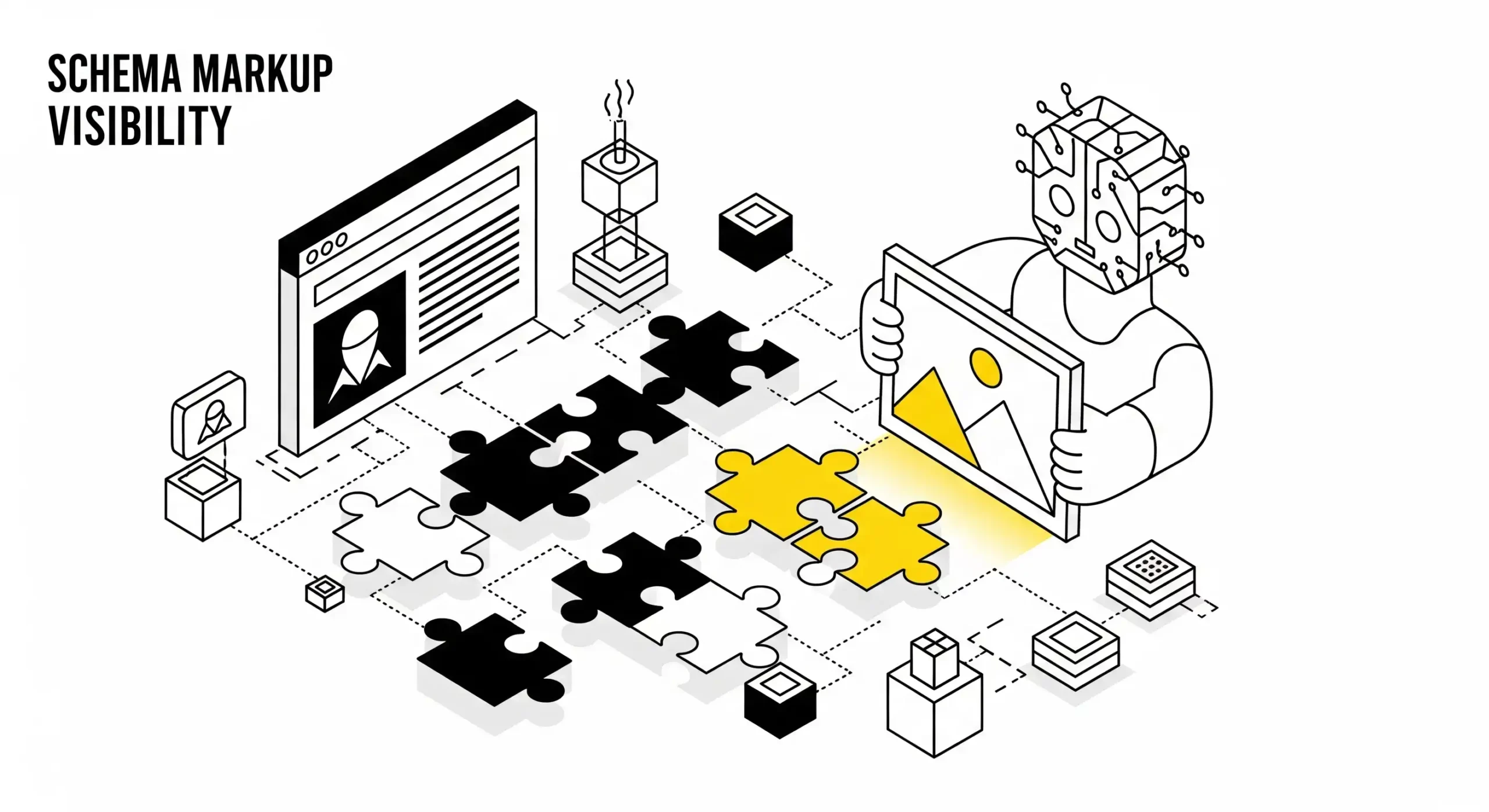While you were busy optimizing meta tags and building backlinks, a quiet revolution started brewing. AI is eating the internet, and it’s hungry for structured content that it can actually understand.
Imagine waking up tomorrow to find that half your traffic now comes from AI-powered search engines and chatbots — not Google. Are you ready? Because if your site isn’t speaking the right language to these AI systems, you might as well be invisible.
Enter llms.txt — the file that’s about to change how AI sees your website. And trust me, you’ll want to be ahead of this curve.
Understanding llms.txt: Origins, Purpose, and Evolution
Remember when we all scrambled to implement robots.txt back in the day? Well, history’s about to rhyme.
In September 2024, Jeremy Howard (co-founder of Answer.AI) dropped a proposal that’s quickly gaining traction: a standardized way to help AI language models make sense of your website. The problem was simple but massive — AI systems struggle with the messy web just like humans do, but worse.
Think about it. When you visit a website, you instinctively know to ignore the navigation, skip past the ads, and find the content you care about. AI doesn’t. It gets bogged down trying to process everything, wasting precious context window space on garbage it doesn’t need.
Howard’s solution? Create a dedicated file that gives AI a clean, structured view of your content — a digital tour guide pointing to what matters most.
In just a few months, major platforms like Anthropic, Mintlify, and countless developer tools started implementing it. No, it’s not an official standard… yet. But it’s gaining momentum faster than most web standards ever have.
How llms.txt Works: Core Concepts and Structure
At its core, llms.txt is embarrassingly simple — and that’s its genius. It’s a markdown file that sits at the root of your website (yoursite.com/llms.txt) providing AI with a roadmap to your content.
Think of it like the cliff notes version of your site that speaks AI’s language.
Key Elements and Syntax of llms.txt
The structure follows a specific format that balances human readability with machine parsability:
- H1 header with your site or project name
- Blockquote with a concise summary of what your site is about
- H2 sections categorizing your content (like “Documentation,” “Products,” “FAQs”)
- Links with descriptions pointing to key resources
- An optional “Optional” section for less critical content
Here’s what a basic llms.txt file looks like:
Many sites also create an extended version called llms-full.txt that contains more comprehensive content — perfect for AI systems with larger context windows.
Sample llms.txt Files and Real-World Examples
Want to see this in action? Check out these real implementations:
- Anthropic: Their file highlights API documentation and usage guides
- Cursor: The AI code editor focuses on product features and how-to guides
- Tinybird: This data platform organizes their docs by use case and API endpoints
The most effective implementations curate content strategically, not dumping every URL but focusing on what matters most to users.
Why Consider llms.txt? Benefits and Use Cases for SEOs and Businesses
Let’s cut to the chase — AI is becoming the front door to your content. When someone asks Claude or ChatGPT about your business, the answer they get is your new first impression.
Without llms.txt, you’re leaving that first impression to chance.
Enhancing AI and LLM Integration
When AI systems crawl your site, they’re playing a guessing game about what’s important. With llms.txt, you:
- Guide AI to your most valuable content first
- Ensure AI understands your content’s structure and relationships
- Help AI work within context window limitations
- Enable more accurate answers about your products and services
It’s like trying to pitch an idea at a busy conference — you need to lead with your main point, not bury it on slide 17.
Improving Website Visibility and Search Accuracy
The SEO parallels are hard to miss:
- Early adopters of metadata and structured data got a leg up in search
- First companies with mobile-friendly sites dominated mobile search
- Now, the pioneers implementing llms.txt will likely see an advantage in AI-driven search
As AI-powered tools like Perplexity, Claude, and ChatGPT become increasingly popular entry points to the web, optimizing for them isn’t just nice-to-have — it’s becoming essential.
Addressing Content Misrepresentation & Governance
Ever seen AI misrepresent your content or pull outdated information? It sucks, right?
With llms.txt, you take back some control:
- Guide AI to your latest pricing, not a blog post from 2019
- Highlight your actual return policy, not a buried FAQ
- Showcase your best content instead of whatever the AI randomly found
It’s the difference between letting AI rummage through your entire house versus giving it a curated tour of the rooms you want it to see.
Setting Up llms.txt on Your Website
The good news? Implementation is surprisingly straightforward. You don’t need to rebuild your site or hire a developer with a PhD.
Step-by-Step Implementation Guide
- Create a markdown file named
llms.txtusing any text editor - Structure it with the format outlined above:
- H1 with your site name
- Blockquote summary
- H2 sections with logical categories
- Links with brief descriptions
- Upload it to your web server’s root directory (same place as robots.txt)
- Test it by accessing yourdomain.com/llms.txt in a browser
- Optionally create an llms-full.txt with more comprehensive content
If creating this manually feels tedious, several generators have emerged:
- Firecrawl’s llms.txt Generator can crawl your site and generate a basic LLMs.txt file for free.
- The SEO Hustler offers a free llms.txt generator here
Here’s how The SEO Hustler’s llms.txt generator works:
- You input your homepage URL
- Our server crawls several pages on your website
- The HTML content is converted into markdown format (for better AI ingestion)
- The markdown content is fully processed through our LLM to:
- Perform NLP analysis on your content
- Extract concepts, entities, and keywords
- Understand what your website offers
- Summarize this information
- Write an optimized llms.txt file that prioritizes your website’s key pages and semantic value
- Present you with a downloadable llms.txt file
Because of all these steps, this process might take up to 10 minutes. But don’t worry, you can continue browsing while our system works in the background.
Advanced Configuration: Multilingual, Dynamic, and Large Sites
Managing more complex implementations? Consider these approaches:
For multilingual sites:
- Create language-specific versions (llms.en.txt, llms.es.txt) or
- Include all languages in a single file with clear section headers
For large e-commerce sites:
- Focus on category pages and top products
- Include customer service policies and FAQs
- Link to dynamically generated product feeds
For sites with frequently changing content:
- Implement server-side generation that updates automatically
- Focus on evergreen content and category structures
- Use relative links where possible
Common Pitfalls and Troubleshooting Tips
Avoid these rookie mistakes:
- Don’t copy-paste your sitemap — be selective and descriptive
- Don’t use complex formatting — keep it clean and simple
- Don’t forget descriptions — links alone aren’t enough
- Don’t set it and forget it — update as your site evolves
- Don’t include sensitive information — it’s publicly accessible
And remember to validate your markdown formatting — broken syntax can confuse AI parsers just as much as messy HTML.
Not an Official Standard (Yet): Risks, Limitations, and Industry Adoption
Let’s be real — this isn’t an official web standard yet. No major LLM provider has formally committed to prioritizing llms.txt in their crawling and indexing.
That said, the rapidly growing adoption suggests it’s filling a genuine need.
Adoption Trends & Directory of Early Users
The momentum is undeniable:
- Tech companies are leading adoption (Anthropic, Mintlify, Cursor)
- Developer tools are particularly active (documentation is a perfect use case)
- Community directories like directory.llmstxt.cloud track implementations
- Open-source tools are emerging to support creation and management
It feels reminiscent of early SEO — a bit wild west, but with clear patterns of what’s working.
Potential Challenges and Future Developments
There are still hurdles to overcome:
- No guarantee that all AI systems will respect the format
- Potential for differing implementations across platforms
- Lack of standardized validation tools
- Questions about scalability for massive sites
But the trajectory points toward broader adoption and potentially formal standardization in the future.
llms.txt vs robots.txt, sitemap.xml, and Emerging Alternatives
You might be thinking, “Don’t we already have files that do this?” Not exactly.
Key Differences, Pros/Cons, and Integration Strategies
| robots.txt | sitemap.xml | llms.txt |
| Controls crawler access (what can be crawled) | Lists all indexable pages | Curates content specifically for AI understanding |
| Doesn’t help with content understanding | Lacks content hierarchy or descriptions | Includes descriptions and context |
| Binary allow/disallow mentality | Often too comprehensive for AI context limits | Focuses on value, not exhaustive coverage |
The smart play is using all three in concert:
- robots.txt to control access
- sitemap.xml for comprehensive indexing
- llms.txt for AI-specific guidance
Together, they form a powerful trio for managing how different systems interact with your site.
Interactive: Generate Your Own llms.txt File
Ready to dive in? Use our free generator to create your own llms.txt for your website
It’s free, the effort investment is minimal, but the potential upside is huge — especially as AI-driven search continues to grow.
Case Studies: Examples of Organizations Leveraging llms.txt
There’s anedoctal and single organization reports from early adopters about its benefits:
Tech Documentation Sites: When developers ask AI assistants coding questions, sites with llms.txt implementation are more likely to be cited accurately and extensively. [Reference #1, Reference #2]
E-commerce Companies: By highlighting product categories and policies clearly, customers get more accurate information when asking AI about products and services.
Content Publishers: News and media sites organizing their content through llms.txt help ensure AI references their latest and most authoritative content.
Ps. We didn’t mention sources for e-commerce companies and content publishers because, at this point, we couldn’t individually test them.
Conclusion: Should You Implement llms.txt Now?
Here’s the bottom line: The tools are free. The playing field is wide open. What’s your excuse?
If you’re in SEO, marketing, or web development, implementing llms.txt is a no-brainer low-hanging fruit that takes less than an hour but potentially positions you ahead of the AI-driven search curve.
No, there’s no guarantee it will drive traffic tomorrow. But neither was there a guarantee that mobile optimization would matter when smartphones first appeared.
The smart money gets ahead of the curve, not behind it.
Frequently Asked Questions about LLMs.txt
What is llms.txt and why was it created?
llms.txt is a markdown file that helps large language models (LLMs) better understand your website content. It was created by Jeremy Howard in September 2024 to solve the problem of AI systems struggling with complex websites and limited context windows.
Is llms.txt an official web standard?
Not yet. It’s a proposed standard that’s gaining rapid adoption, but no major LLM provider has officially committed to using it as a primary signal. That said, its growing popularity suggests it’s solving a real problem.
How is llms.txt different from robots.txt and sitemap.xml?
While robots.txt controls what can be crawled and sitemap.xml lists all your pages, llms.txt specifically guides AI systems to understand your content structure and prioritize what’s important. It’s focused on content understanding, not just discovery.
How do I create an llms.txt file for my website?
Create a markdown file with your site name as an H1 header, a summary in a blockquote, and H2 sections organizing your key content with links and descriptions. Upload it to your website’s root directory so it’s accessible at yourdomain.com/llms.txt.
What are the benefits of using llms.txt for SEO and AI integration?
It improves how AI understands and represents your content, potentially increasing visibility in AI-powered search and ensuring more accurate information when users ask AI about your products or services.
Can llms.txt help prevent misrepresentation of my site by AI models?
While it can’t guarantee perfect representation, it gives you more control by guiding AI to your most important and current content, reducing the chance of outdated or misleading information being referenced.
What should I include in my llms.txt file?
Focus on your most valuable content: key product pages, documentation, FAQs, policies, and resources that users commonly seek. Include brief descriptions with each link to provide context.
Are there tools or generators to help build llms.txt files?
Yes, several tools can help generate these files, including Firecrawl’s llms.txt generator, Mintlify’s automatic generation for docs, and various open-source tools on GitHub.
How do I handle advanced needs like multilingual or rapidly changing websites?
Consider language-specific versions, server-side generation that updates automatically, or focusing on category structures rather than individual pages that change frequently.
What are the risks and limitations of adopting llms.txt today?
The primary risk is that it’s not an official standard, so there’s no guarantee all AI systems will use it. However, the implementation cost is minimal, making it a low-risk investment with potentially high rewards as AI-driven search grows.


